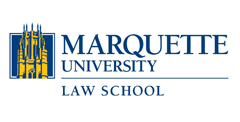Abstract
Mr. Anderson discusses the current status of medical procedure patents in the United States through the examination of a survey conducted on patent law and the patentability of inventions. Mr. Anderson examines the history of medical process patents and the controversy surrounding such patents and offers an analysis of current law. The analysis focuses on the Pallin v. Singer decision and the congressional reaction to the holding that eventually led to the passage of 35 U.S.C. § 287(c). As a result of the Pallin decision and 35 U.S.C. § 287(c), a patent may be granted for a medical procedure, but the patent owner cannot enforce it against likely infringers. Thus, Mr. Anderson demonstrates how current patent laws are adequate to encompass such patents and rejects racing to a sui generis solution.
Repository Citation
Scott D. Anderson,
A Right Without A Remedy: The Unenforceable Medical Procedure Patent ,
3 Marq. Intellectual Property L. Rev. 117
(1999).
Available at: https://scholarship.law.marquette.edu/iplr/vol3/iss1/4
